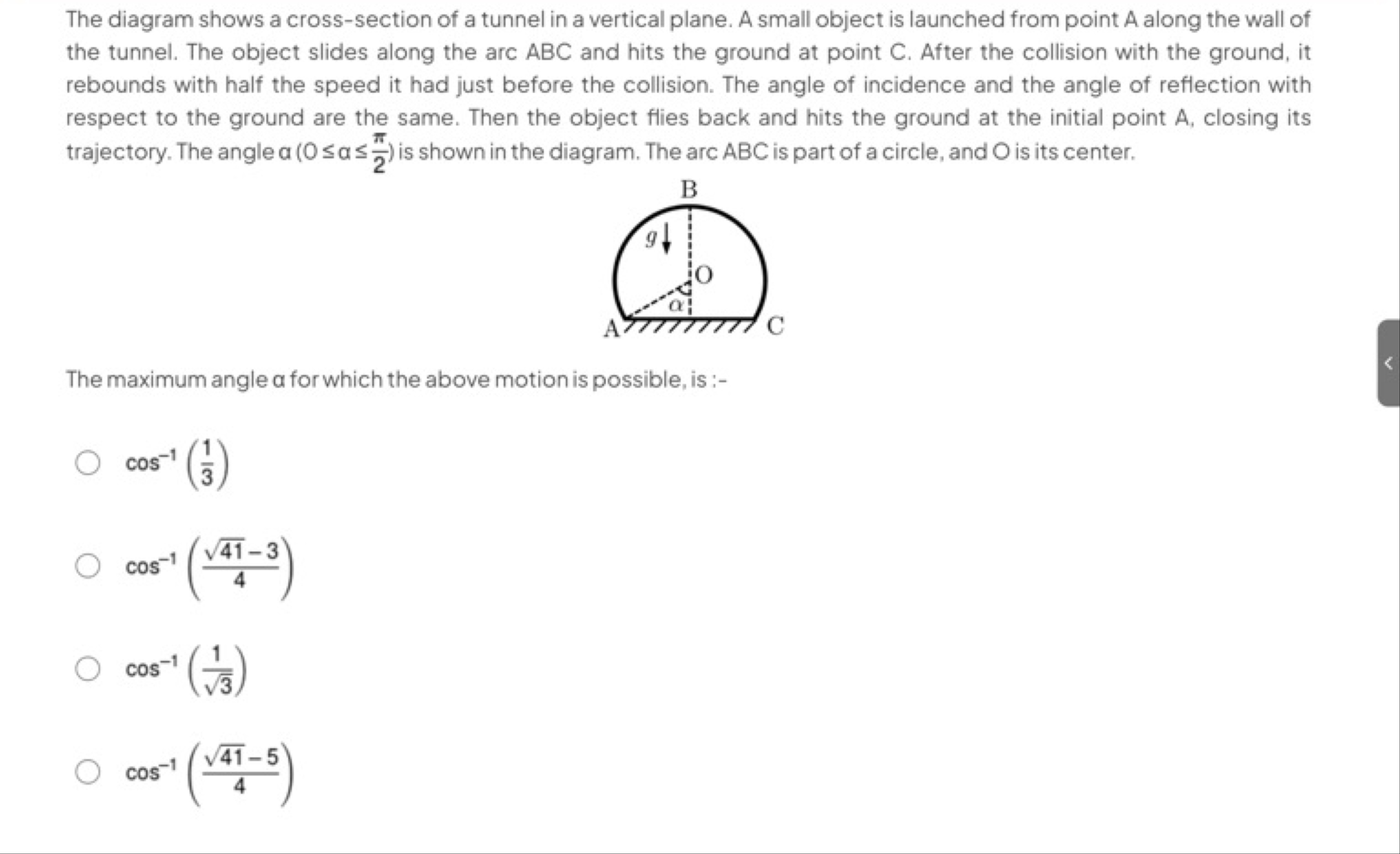Question
Question: The diagram shows a cross-section of a tunnel in a vertical plane. A small object is launched from p...
The diagram shows a cross-section of a tunnel in a vertical plane. A small object is launched from point A along the wall of the tunnel. The object slides along the arc ABC and hits the ground at point C. After the collision with the ground, it rebounds with half the speed it had just before the collision. The angle of incidence and the angle of reflection with respect to the ground are the same. Then the object flies back and hits the ground at the initial point A, closing its trajectory. The angle α (0≤α≤2π) is shown in the diagram. The arc ABC is part of a circle, and O is its center.
The maximum angle α for which the above motion is possible, is :-

cos−1(31)
cos−1(441−3)
cos−1(31)
cos−1(441−5)
cos−1(441−3)
Solution
The problem involves a complex analysis of projectile motion, energy conservation, and the geometry of a circular arc. The key steps include:
-
Understanding the Geometry: The setup describes an object sliding along a circular arc and then becoming a projectile. The relevant points and angles need to be correctly interpreted from the diagram.
-
Energy Conservation: As the object slides along the arc, mechanical energy is conserved. This helps relate the initial and final velocities.
-
Projectile Motion: After leaving the arc, the object undergoes projectile motion, which must be analyzed to determine the conditions for it to return to the starting point.
-
Collision: The collision with the ground involves specific conditions for the angle of incidence and reflection, and the speed after collision is half of what it was before.
-
Solving the Equations: The conditions for the object to return to the starting point yield a complex system of equations. These equations must be solved to find the maximum angle α.
The final answer involves solving a quadratic equation, which leads to cosα=441−3. Therefore, α=cos−1(441−3).
